When one thinks of Roman entertainment, savage fights between prisoners and animals (like in Gladiator) and chariot races (like in Ben-Hur) come to mind. Chariot races were usually held in the circus, the gladiator fights were the domain of the amphitheaters. The combats between criminals, prisoners or war, slaves and animals are a testament of the character and life of the Romans who considered these combats good training for a nation of warriors. Occasionally, free citizens would even enter the fight to enjoy their 15 minutes of fame.
The first Roman amphitheaters were built in the 1st century BC from wood and were designed by rotating and joining two theaters built back-to-back so that they formed an oval (amphitheatre in fact means “double theatre”). Located in every corner of the Roman Empire, more than 230 amphitheaters have been found, from the mighty Colosseum in Rome to the arena ruins of Chester, England.
10. Uthina Amphitheater
Uthina (or Oudna) was a Roman colony in Tunisia. It was on the main route to Carthage from the south and west of the country. The city appears to have fallen into ruin after the Arab conquest in the 7th century. Still being excavated, the ruins are little visited.
The archaeological park includes a Roman amphitheater which could host about 16,000 visitors. The lower half of the amphitheater is dug into the hill while the arcs are above the ground. The seats are not original and were only reconstructed recently.
9. Pozzuoli Amphitheater
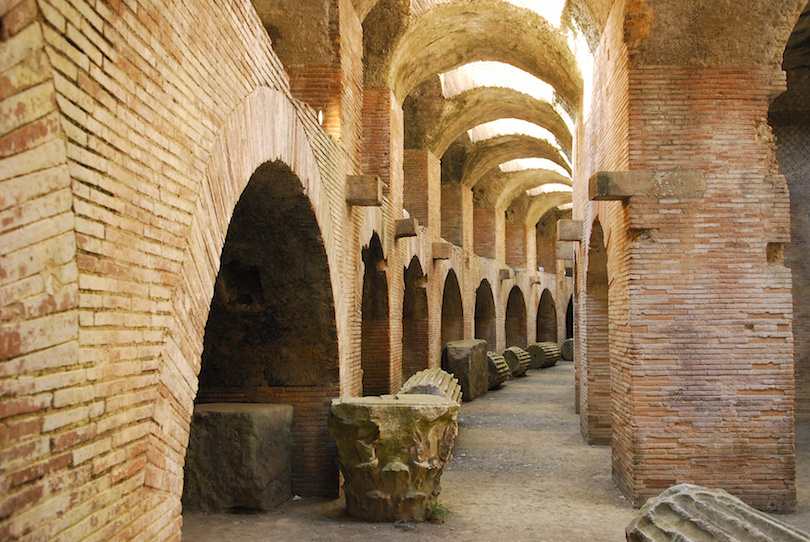
The Amphitheater in Pozzuoli is one of the largest Roman amphitheaters in Italy capable of hosting over 20,000 spectators. Its construction begun under the reign of emperor Vespasian who also initiated the construction of the Colosseum in Rome.
Unlike the Colosseum not much remains of the upper ranges of seats but the subterranean areas are very well preserved, including the cages for keeping animals and parts of the mechanisms for lifting them to the arena floor. In the late antique period the arena was abandoned and partly buried under ash following an eruption of the volcano Solfatarain.
8. Leptis Magna Arena
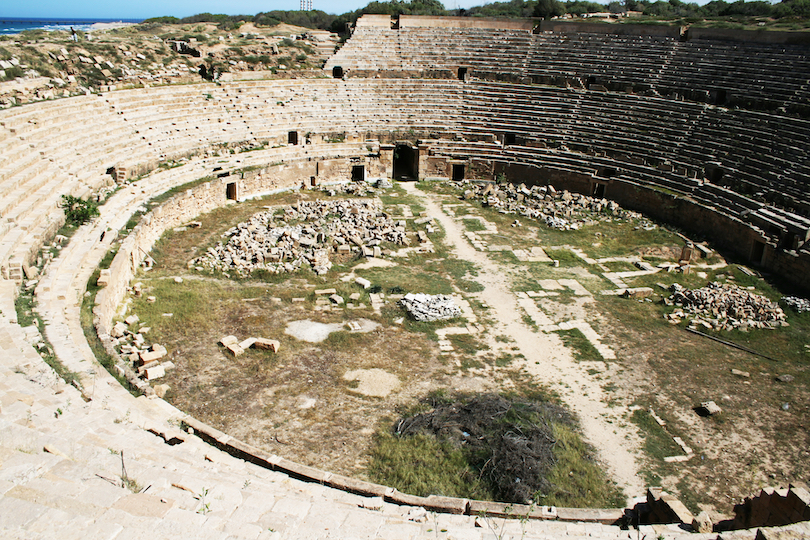
Located in modern-day Libya, Leptis Magna was founded by the Phoenicians in the 10th century BC and became part of the Roman empire after the defeat of Carthage in 146 BC. Under Roman rule the city prospered and became a major trading post.
Leptis Magna was abandoned in 523 AD after it was sacked by a Berber tribe and quickly reclaimed by the desert. Having been covered in desert sand for centuries it contains one of the most spectacular and unspoiled Roman ruins in the Mediterranean.
The Roman amphitheater of Leptis Magna dates from 56 AD and lies about a kilometer east of the city center. It was capable of seating 16,000 spectators. Unlike most Roman amphitheaters, it is built below the ground.
7. Roman Arena in Arles
The Roman Arena is one of the most popular tourist attraction in the city of Arles in southern France. It was built around the 1st century BC and was capable of seating over 20,000 spectators on three tiers.
From 1830 until the present day the arena has been used for hosting bullfights, which the Romans certainly would have approved as it is only slightly less brutal as the chariot races and bloody hand-to-hand battles they themselves enjoyed.
6. Amphitheatre Nimes

Built at the end of the 1st century AD to seat 24,000 spectators, the Arena of Nîmes was one of the biggest Roman amphitheaters in Gaul (present day France). During the middle ages a fortified palace was built within the amphitheater.
Later a small neighborhood developed within its confines, complete with 700 inhabitants and two chapels. In 1863 the arena was remodeled to serve as a bullring and today it host two annual bullfights as well as other other public events.
5. Pompeii Spectacula
On August 24, 79 AD, the volcano Vesuvius erupted, covering the nearby town Pompeii with ash and soil, and subsequently preserving the city in its state from that fateful day. Some of the best preserved structures in Pompeii are the 2 theaters and the amphitheater. Built around 70 BC it is the oldest surviving Roman amphitheatres in the world.
The amphitheater was called a spectacula as the term amphitheatrum was not yet in use. It could host about 20,000 spectators, equal to the entire population of Pompeii. In 59 AD a violent riot broke out between fans from Pompeii and a rival town which prompted the Senate to ban any further games there for ten years.
4. Pula Arena
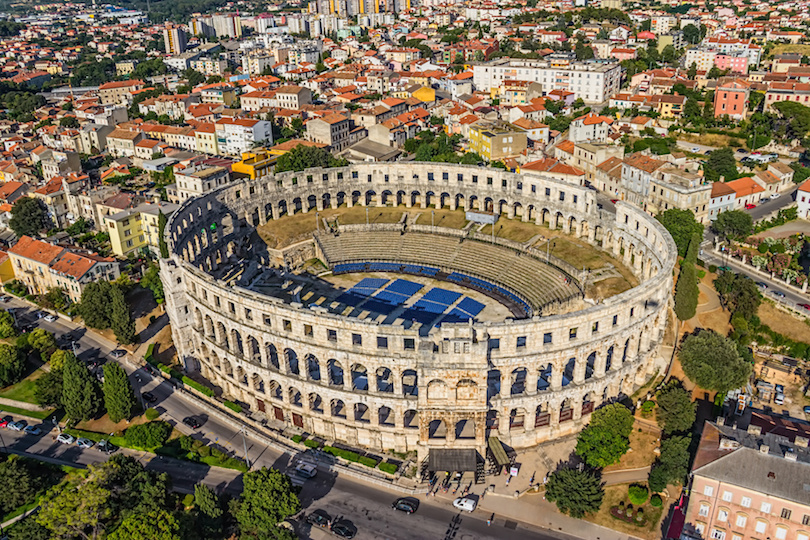
The amphitheater in Pula is the sixth largest surviving Roman arena and one of the best preserved ancient monuments in Croatia. The Pula Arena was built around the 1st century AD and could seat over 26,000 spectators.
In the 15th century many stones were taken from the amphitheater to build houses and other structures around Pula, but fortunately this practice was stopped before the whole structure was destroyed. Today it is used to host a variety of festivals and performances during the summer months.
3. Verona Arena
The Verona Arena in Italy is the world’s third-largest amphitheater to survive from Roman antiquity. It’s outer ring of white and pink limestone was almost completely destroyed during a major earthquake in 1117 but the inner part is still amazingly well preserved.
The Arena in Verona was built in 30 AD and could host 30,000 spectators. The Roman amphitheater has been used continuously throughout the centuries to host shows and games: gladiator fights during Roman times, jousts and tournaments in the Middle Ages and from the 18th century until the present day the arena is the setting for Verona’s spectacular opera performances.
2. Amphitheater of El Djem

The Roman amphitheater of El Djem in Tunisia is the third largest arena in the world, after Rome’s Colosseum and the ruined theater of Capua. El Djem was formerly the Roman town of Thysdrus, one of the most important towns in North Africa after Carthage.
The amphitheater was built in the early 3rd century AD capable of seating 35,000 spectators. The structure remained in a good state until the 17th century when stones from the arena were used for building the nearby village of El Djem and transported to the Great Mosque in Kairouan.
More recently and less destructive it was used for filming some of the scenes from the Oscar winning film Gladiator. It is now a popular tourist destination in Tunisia.
1. Colosseum
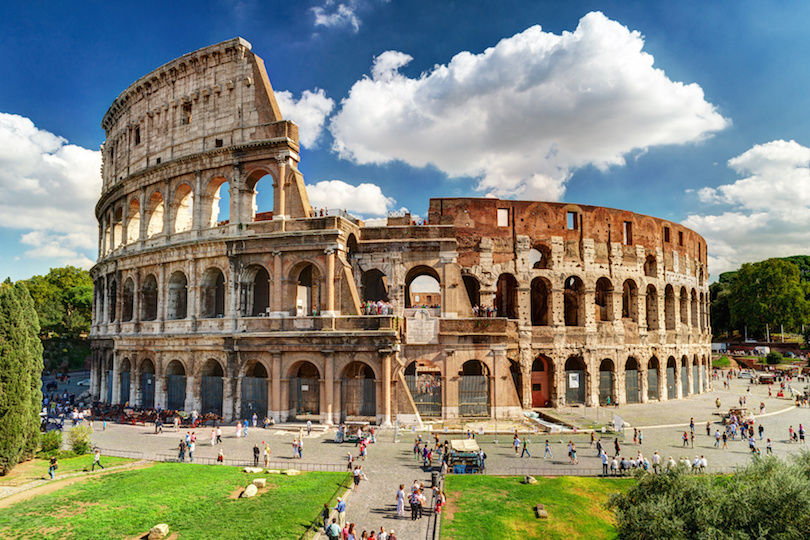
The Colosseum in Rome is the largest and most famous amphitheater in the Roman world. Its construction was started by emperor Vespasian of the Flavian dynasty in 72 AD and was finished by his son Titus in 80 AD.
During the Colosseum’s opening ceremonies, spectacles were held for 100 days in which 5,000 of animals and 2,000 gladiators were killed. The Roman Colosseum was capable of holding some 50,000 spectators who could enter the building through no less than 80 entrances.
Spectators were protected from the rain and heat of the sun by sails called the “velarium”, that was attached around the top of the attic. The Colosseum is a must visit sight on any tour of Rome.


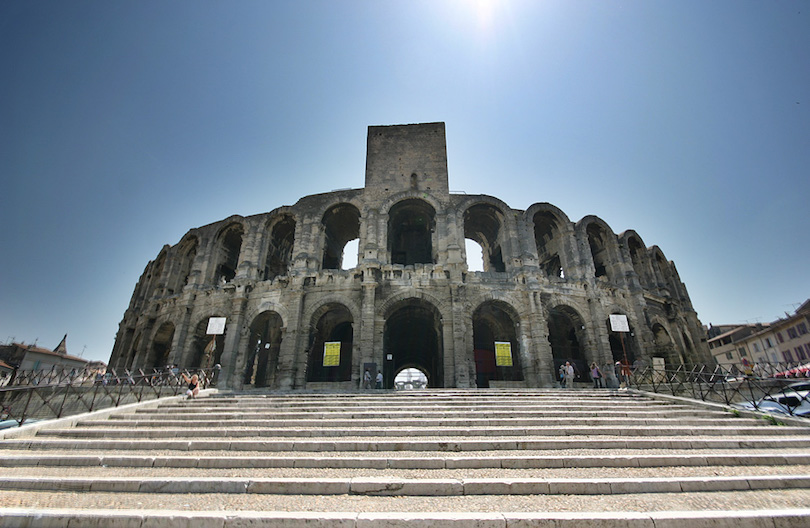
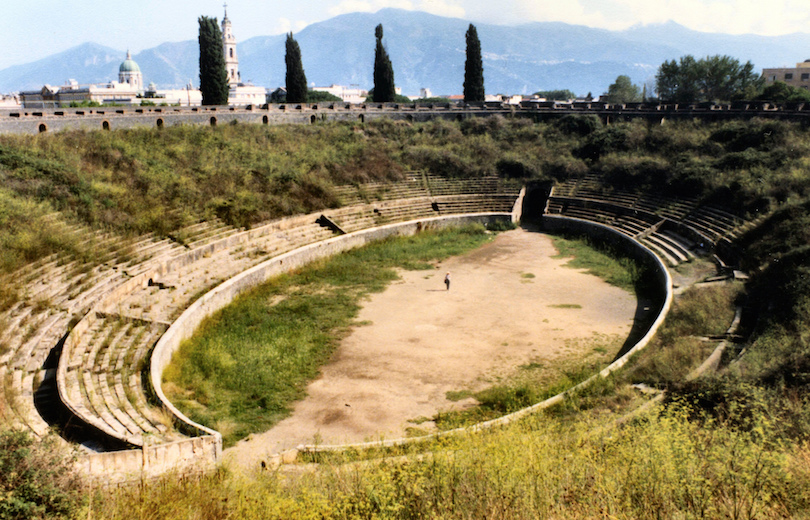
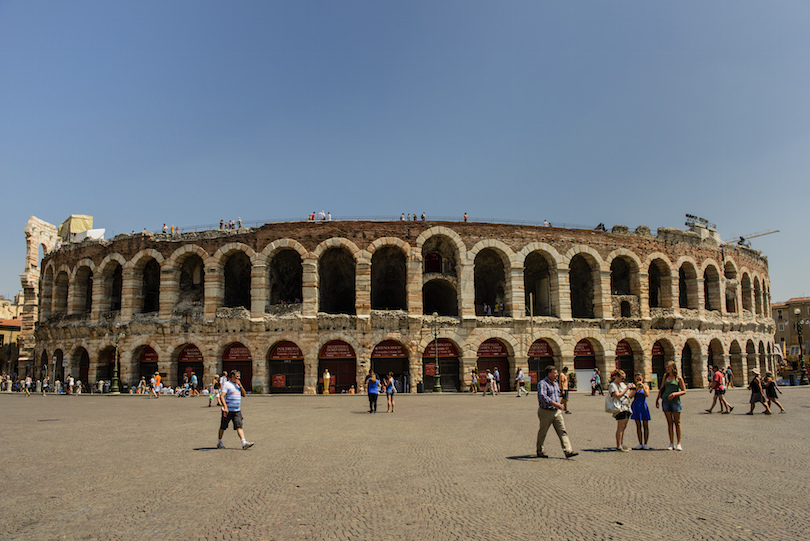
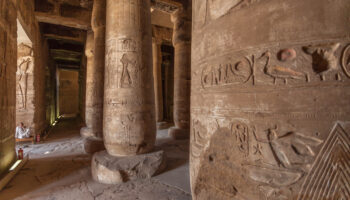
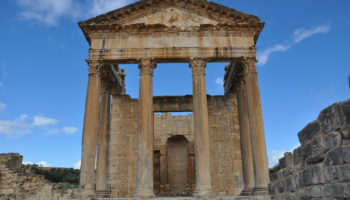

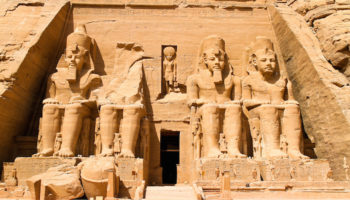
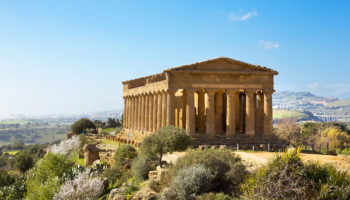


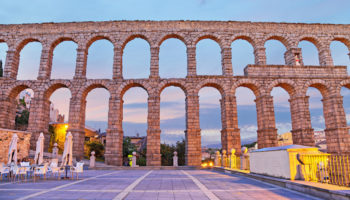
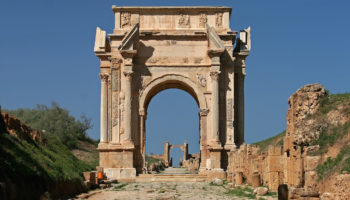

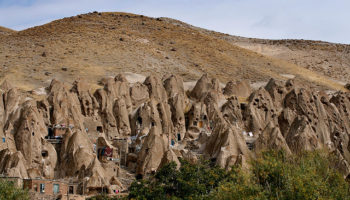

The Italica amphitheater, in the southwest of Spain, was recently used for filming scenes from Season 7 of Game of Thrones. It has been closed off for an extended period this year (2018) so there will likely be more of it seen in the series finale Season 8.
I have been to the ElDjem coliseum (#2 above) when I was in Tunisia in the Peace Corps in ’73 and ’74. It was in pretty good shape, except for the fact that the Turks stripped all of the marble facing for use elsewhere. Later, in the 1870’s, local rebels figured it would make a nifty fort…except for the fact that the Ottoman empire had artillery.
We wanted to play Frisbee in the coliseum, but the guards chased us away. Nearby, there is an even older amphitheater: the top of a nearby hill was dug out to create the seating areas as well as the arena floor. It looked to be from the earlier days of Carthage – maybe 200 BC. There, we enjoyed a lively game of Guts Frisbee. Looking on Google Earth, this site appears to have been recently turned into a graveyards.
The Italica amphitheater, in the southwest of Spain, was recently used for filming scenes from Season 7 of Game of Thrones. It has been closed off for an extended period this year (2018) so there will likely be more of it seen in the series finale Season 8.
I have been to the ElDjem coliseum (#2 above) when I was in Tunisia in the Peace Corps in ’73 and ’74. It was in pretty good shape, except for the fact that the Turks stripped all of the marble facing for use elsewhere. Later, in the 1870’s, local rebels figured it would make a nifty fort…except for the fact that the Ottoman empire had artillery.
We wanted to play Frisbee in the coliseum, but the guards chased us away. Nearby, there is an even older amphitheater: the top of a nearby hill was dug out to create the seating areas as well as the arena floor. It looked to be from the earlier days of Carthage – maybe 200 BC. There, we enjoyed a lively game of Guts Frisbee. Looking on Google Earth, this site appears to have been recently turned into a graveyard.
Visited amphitheatre in Pula, Croatia recently and thought it more impressive than colosseum in Rome.
What about Italica’s amphiteater! One of the biggest amphitheaters of the Roman world, the bigest outside Italy. It could keep more than 25.000 persons, its major axis is more than 154 m.; minor is 130 m. long. It was built at Adrianus Emperor age. Italica, near Seville (Spain), was the birthplace of the Roman emperors Trajan and Hadrian.
What activities are held at the colosseum today?
Hey! Very amazing these structures and thanks for sharing their history, especially the Colosseum. But, tell me plz, is the movie Gladiator with (Russel Crow) based on a true story? If yes, then congratulations to the movie maker, the setting of the movie looks real and one would feel being part of the life those guys (gladiators) went through.
Beautiful photos. Absolutely in awe of the magnificent theaters of ancient times. I am also a real history buff. Thanks for the photos and very interesting information here.
Pretty awesome monuments My favourite is no.3, it still nearly fully intact. 🙂
@Mike, Ephesus has a theater, not an amphitheater.
What about the Ampitheatre at Ephesus in Turkey? It sat 24,000-25,000 and is still used today every once in awhile for concerts (i.e. Sting, Diana Ross, etc). Very well preserved.
Fantastic architecture, don’t make them like they used to. My favourite is no. 7 with the seating still in place.